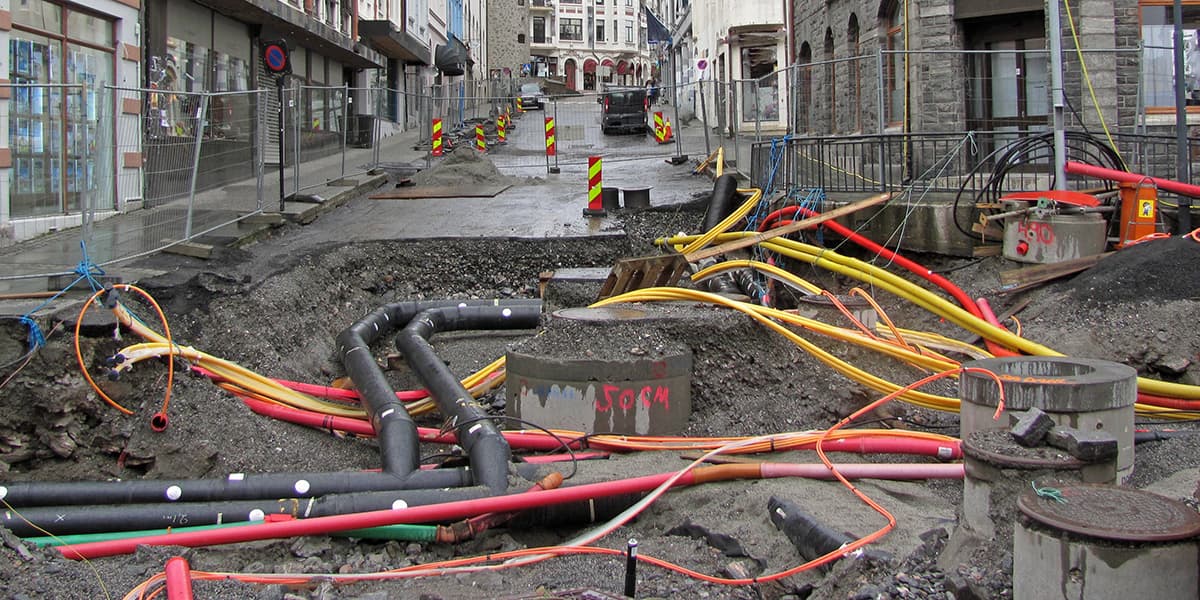Accurate, up-to-date asset data is crucial for utility companies to manage and protect their assets, plan effectively, and liaise with contractors. Yet despite the widespread use of digital data collection tools, many companies still use manual, paper-based processes to transfer data from the field to the office.
Accurate, up-to-date asset location is crucial for utility companies to manage and protect their infrastructure, plan effectively, and liaise with contractors. Yet despite the widespread use of digital data collection tools, many companies still use manual, paper-based processes to map their assets and to transfer data from the field to the office.
Transferring data from a field worker’s existing mobile mapping app to your office software systems can be a slow, clunky, error-prone process when done manually. Not to mention the time and effort spent processing the data once uploaded and using it to create as-built plans.
All of this negatively impacts how quickly, efficiently, and accurately your teams can work.
The good news is, with the right software, you can overcome these challenges to improve overall data accuracy, efficiency, process speed and visibility. Here, we’ll review the key features utility companies should consider when choosing asset mapping software.
Key features to look for when choosing utility mapping software
What specific software features will help your company work more efficiently and accurately when collecting, processing, and using asset data?
1. User-friendly with minimal training required
Many data collection tools are complicated to learn and use, especially if you’re unfamiliar with surveying or GIS or CAD systems. This means extra time and cost spent on training staff to use the tools. It also narrows the pool of people you can deploy to collect the data.
So, choose a data collection tool that is quick and easy to learn and use – even for people without surveying experience or prior technical knowledge.
2. Flexible data input options
For more than 75% of companies, collecting asset data typically goes like this:
- An engineer logs the asset using a mobile mapping app.
- Then, they whip out a camera to take a photo or two.
- Next, they use a pen and paper to write notes and sketch a drawing.
- Back at the office, these three different data sources need to be uploaded, compiled, and appended to the correct record.
To streamline your data collection workflow – reducing paperwork, time, and errors – choose utility mapping software that lets your field crew capture different data types.
With modern, high-precision data collection tools, when you log an asset, you can also create digital drawings, take georeferenced photos, and add digital notes – all in one place.
3. Interactive access to existing maps
When your field crews check and map assets, they often want to refer to or create updated versions of existing maps and other data. Some tools don’t allow this, slowing the mapping process.
Equip your field teams with the information they need by selecting a data collection tool that allows them to access and manipulate existing maps and other data on the go.
4. Fast, automatic data synchronisation and processing
Manually uploading and processing data collected is time-consuming, slow, and increases the risk of errors. Look for data collection software that automatically uploads all data to the cloud and synchronises with your enterprise systems to give you an end-to-end workflow.
Automated data syncing and processing provide several benefits:
- Increased productivity – free up staff time previously spent on documenting, exchanging, analysing, and verifying data, and eliminate duplicate data entry.
- Improved data quality – eliminate errors that creep in during manual processing.
- Real-time task oversight – monitor what your field teams are doing with real-time access to data and task statuses.
- Swift sign-off – your GIS and design teams in the office can review and approve maps as the field team produces them.
- Rapid production of as-built plans – create accurate plans in just a few days rather than months to enable timely, precise planning and faster project progress.
- Up-to-date maps – Reduce damage to your infrastructure by being able to provide up-to-date network location maps to those digging within days of your network installs.
5. Software compatibility and integration
Some data collection software is only compatible with selected GNSS devices and EM locators. For optimal efficiency and ease of use, look for high-precision data collection software that is compatible with a wide range of devices and integrates with your enterprise software – GIS, CAD, and ERP – rather than standalone tools.
Integration with GIS and CAD doesn’t only significantly speed up data sharing between field and office. It also makes it much easier to share data with your contractors that is compatible with their systems.
6. Cloud-based with offline access
For maximum efficiency and accessibility, choose a cloud-based asset mapping solution which can still be accessed offline. This means field workers can always access crucial data, including maps, project information, and instructions, even in remote areas without an internet connection.
A cloud-based data collection platform helps future-proof your business, so you’re ready to take advantage of the next wave of technological developments.
Wrapping up
From real-time data syncing and automated processing to flexible, interactive data input options, the right utility mapping software can make a huge difference to companies’ efficiency, data quality, and operational costs. Utility companies should consider these specific factors when choosing data collection software:
- User-friendly with minimal training required
- Flexible data input options
- Interactive access to existing maps
- Automatic data sync and processing
- Software compatibility and integration
- Cloud-based with offline access
Asset mapping software that ticks all these boxes – such as Geolantis.360 – will help you work faster, more efficiently, and more accurately.
Learn more by getting in touch at https://www.geolantis.com/contact
